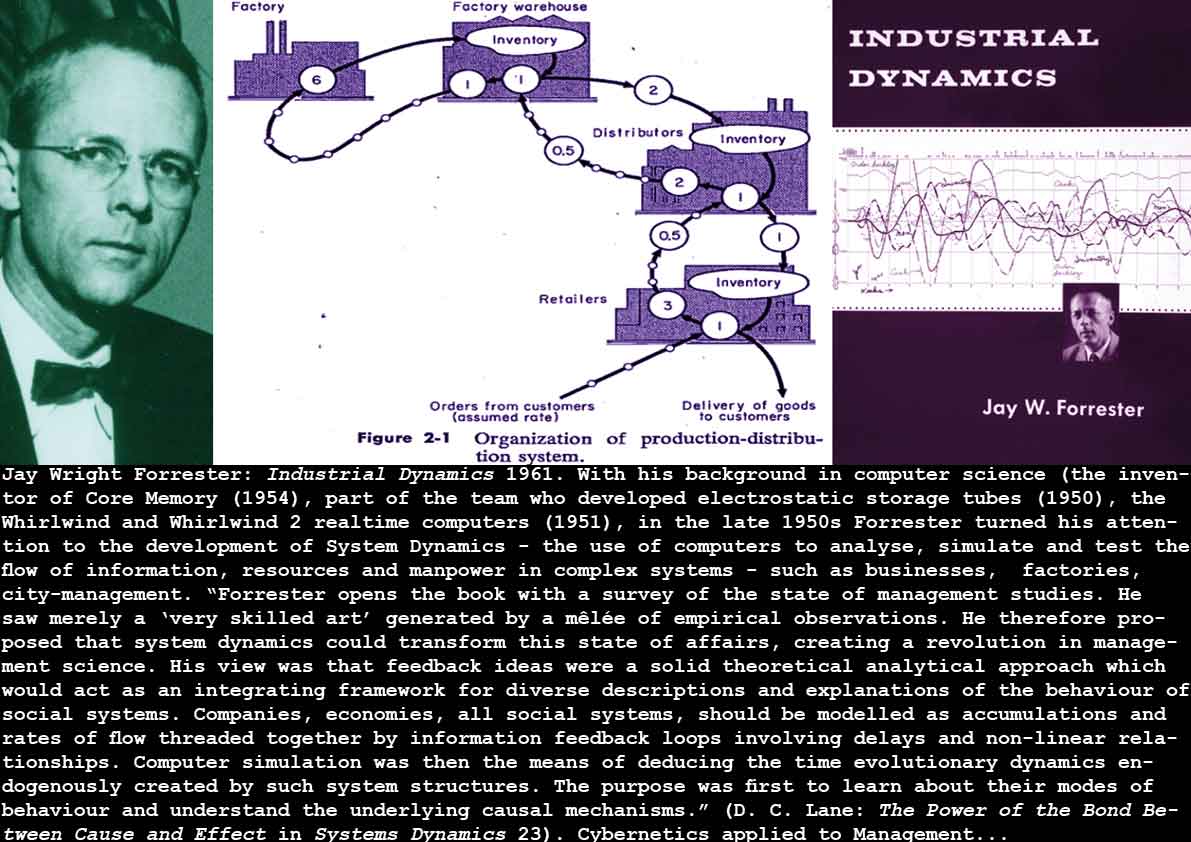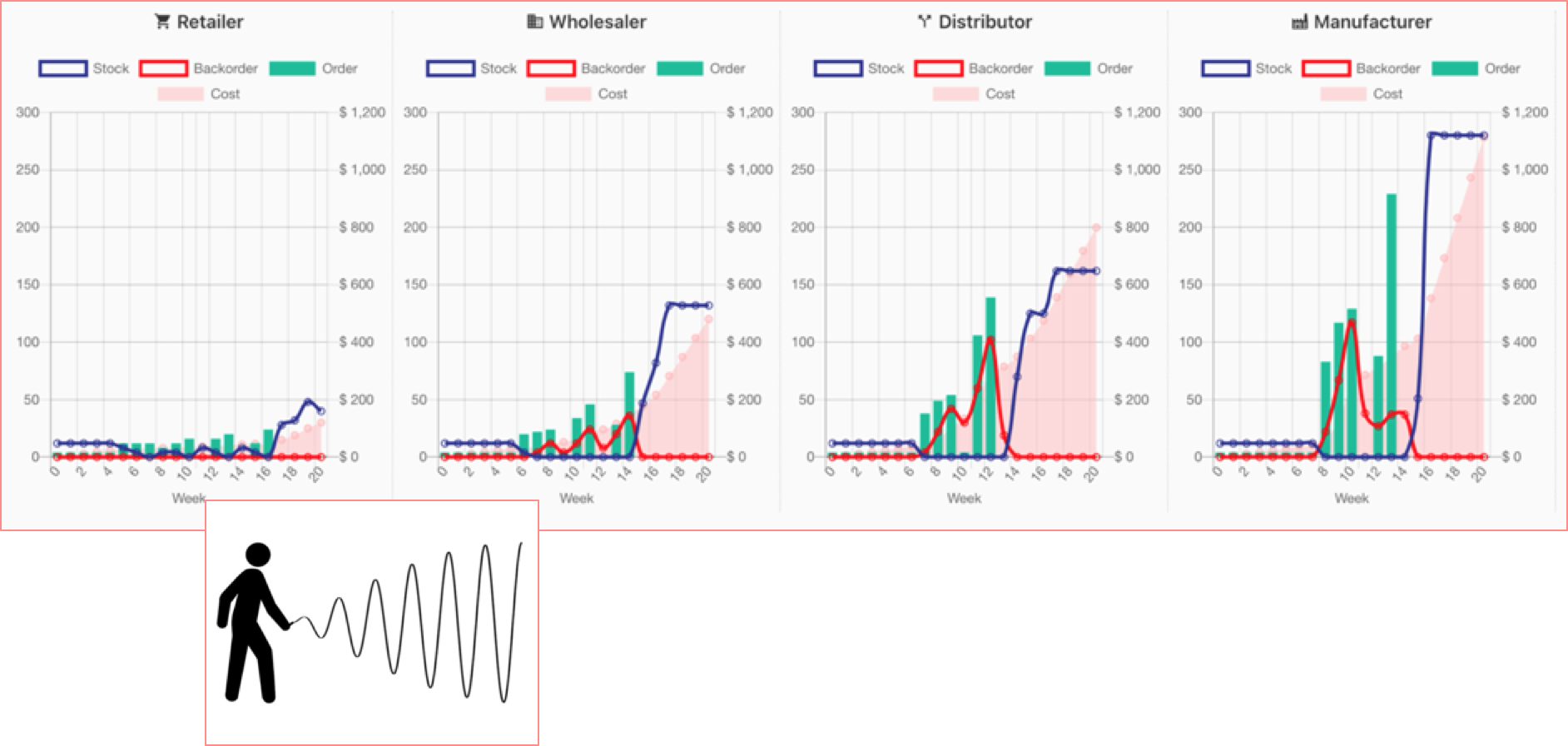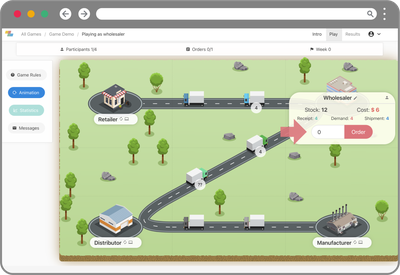In today's interconnected and highly competitive business world, understanding the dynamics of the supply chain is crucial for any enterprise. One of the most critical concepts in supply chain management is the Bullwhip Effect. In this guide, we'll explore the Bullwhip Effect, its causes, its impact on businesses and how to reduce and avoid this effect. We’ll illustrate the Bullwhip Effect through interactive examples thanks to the online Beer Game. Additionally, we'll explain you why top-ranking companies are particularly concerned with the Bullwhip Effect and the Beer Game.
Whether you are a supply chain professional looking to deepen your knowledge, or a newcomer eager to understand the fundamentals, this article provides a comprehensive guide to navigating the complexities of the Bullwhip Effect.
What’s the Bullwhip Effect?
We will delve deep into the meaning, definition, origin, implications, and effects of the Bullwhip Effect on businesses.
Bullwhip Effect Meaning
Before we get into a textbook definition, let's explore what the Bullwhip Effect means in a business context. In simple terms, the Bullwhip Effect refers to the phenomenon where order variations increase as you move up the supply chain. In other words, a small change in consumer demand can create larger order fluctuations as the orders move from retailers to wholesalers, distributors, and manufacturers.

Bullwhip Effect Definition
The Bullwhip Effect is defined as the amplification of demand fluctuations, not due to actual customer demand but due to the disconnection between the various links in the supply chain. In supply chain management, the Bullwhip Effect can significantly affect the operational efficiency of a business. When the consumer demand information travels up the supply chain, from the retailer to the wholesaler, then to the manufacturer, and possibly to the raw material supplier, it often gets distorted and inflated. This distortion results in variability in order quantity, causing overproduction or underproduction, impacting costs, lead times, and customer service.
Who Invented the Bullwhip Effect?
The term 'Bullwhip Effect' was first coined by Procter & Gamble (P&G) in the 1990s when the company experienced significant demand variability in one of their best-selling products - Pampers Diapers. Jay Forrester, a Computer Engineer and Systems Scientist at MIT, further explored and described this phenomenon in his book "Industrial Dynamics." The concept has since been widely studied and researched in the field of supply chain management.

Where is the Bullwhip Effect Observed?
The Bullwhip Effect is seen in virtually all industries where a supply chain is involved. It is most noticeable in sectors such as consumer electronics, fashion, and pharmaceuticals, where demand can fluctuate significantly.
All parties involved in the supply chain, from raw material suppliers to manufacturers, distributors, retailers, and ultimately consumers, play a role in the Bullwhip Effect. Miscommunication or lack of accurate information among these parties can exacerbate the effect.
What Happens During a Bullwhip Effect?
During a Bullwhip Effect, the demand distortion tends to amplify as it moves upstream in the supply chain. This distortion can lead to several unfavorable outcomes, including:
Increased storage costs due to excessive inventory ;
Lost sales due to stockouts ;
Increased lead time ;
Poor capacity utilization ;
Reduced service levels ;
All these can have detrimental effects on a company's profitability and customer satisfaction.

The Bullwhip Effect is a critical concept in supply chain management that companies must understand and manage. However, fully comprehending this effect's complexities can be a challenge when merely discussed in theory. That's why many companies, consulting firms and schools use the Beer Game. This interactive tool provides a virtual supply chain experience that vividly illustrates the Bullwhip Effect, offering a practical understanding of this critical concept.
Having demystified the Bullwhip Effect – its definition, implications, and various facets, we now delve deeper into what triggers it. By understanding the key instigators behind this phenomenon, businesses can devise effective strategies to mitigate its impact and enhance their supply chain management. Let's unravel the top three Bullwhip Effect causes that businesses must be aware of.
Unraveling the Bullwhip Effect Causes: A Closer Look at the Top 3
In this section, let’s examine the top three Bullwhip Effect causes: demand forecasting, order batching, and price fluctuations.
Demand Forecasting as a Key Bullwhip Effect Cause
Among the critical Bullwhip Effect causes is demand forecasting. Companies often employ demand forecasts to plan inventory and production schedules. However, if these forecasts base on distorted information or incorrect assumptions, it can lead to supply chain variability. As information ascends from the retailer to the wholesaler and manufacturer, each link tends to adjust the forecast based on their interpretation, leading to an amplified forecast error and contributing to the Bullwhip Effect.
The Role of Order Batching in Causing the Bullwhip Effect
Order batching, another significant contributor to the Bullwhip Effect causes, involves consolidating orders to decrease ordering and transportation expenses. While cost-effective, it can also instigate demand fluctuations. High demand periods followed by low or no demand phases can trigger a domino effect up the supply chain, manifesting as the Bullwhip Effect.
How Price Fluctuations Contribute to Bullwhip Effect
Price fluctuations, especially discounts and promotions, significantly influence Bullwhip Effect causes. Retailers often stock up during discount periods, causing a sudden spike in demand. This surge dwindles post-discount, leading to demand variability. Upstream suppliers may misconstrue this as a market demand increase, leading to overproduction and exacerbating the Bullwhip Effect.
Understanding these three main Bullwhip Effect causes can equip businesses to devise strategies mitigating its impact. By enhancing demand forecasting accuracy, effectively managing order batching, and controlling price fluctuations, companies can bolster supply chain efficiency and overall operational performance.
Having explored the key causes behind the Bullwhip Effect, we now have a solid foundation to understand how this phenomenon plays out in real-world business contexts. The effects are far from being confined to abstract theories; they translate into tangible challenges and costs for businesses. Let's delve deeper and unravel the impacts of the Bullwhip Effect on businesses, examining how this seemingly simple concept can lead to complex and costly consequences if not appropriately managed.
Unraveling the Impact of the Bullwhip Effect on Businesses
The Bullwhip Effect, while a core concept in supply chain management, is more than just a theory. Its implications seep into the operational and financial aspects of businesses, impacting their performance and profitability. Let's delve into the key areas where the Bullwhip Effect exerts its influence.
Inventory Management
One of the most visible impacts of the Bullwhip Effect is on inventory management. Demand variability can lead to excess inventory during periods of decreased demand, tying up valuable capital and incurring storage costs. Conversely, during periods of increased demand, businesses may face stockouts, leading to lost sales and dissatisfied customers.
Costs and Profitability
The Bullwhip Effect can significantly affect a company's costs and profitability. Unpredictable order quantities can lead to inefficient production scheduling, causing overtimes or idle times. Businesses may also face increased costs due to expedited shipping for unexpected large orders or emergency orders during stockouts. These cost escalations can reduce profitability.
Supplier Relationships
The Bullwhip Effect can also strain relationships with suppliers. Frequent changes in order quantities can frustrate suppliers and hinder their production planning. Over time, this can lead to a breakdown in supplier relationships and disrupt the overall supply chain.
Customer Satisfaction
Lastly, the Bullwhip Effect can impact customer satisfaction. Stockouts or delayed deliveries due to demand variability can lead to dissatisfied customers, impacting a company's reputation and customer relationships.
Now that we've unraveled the substantial impacts of the Bullwhip Effect on businesses, it's important to visually grasp these concepts in action. What better way to do so than by simulating real-life business scenarios? Enter the Beer Game, a tool designed to create an interactive learning experience. Next, let's delve into exploring the Bullwhip Effect through five interactive examples using the Beer Game, effectively illustrating this complex phenomenon.
Exploring the Bullwhip Effect: 5 Interactive Examples Through the Beer Game
The 'Beer Game,' a supply chain simulation activity, is a compelling way to demonstrate the Bullwhip Effect. Through this hands-on learning exercise, we can grasp the practical implications of the Bullwhip Effect in a supply chain. Let's examine five interactive Bullwhip Effect examples using this intriguing Beer Game.
Explore the Bullwhip Effect with your team or students in this immersive Beer Game Simulation
Easily and quickly explore and explain Bullwhip Effect challenges with your team through this interactive and funny Supply Chain simulation.


Example 1: Sudden Surge in Demand
In our first Bullwhip Effect example, we see a sudden surge in beer demand due to a hot summer weekend. The retailer, not wanting to lose sales, places an enormous order with the wholesaler. The wholesaler, in turn, interprets this as a long-term increase in demand and makes a correspondingly large order to the brewery. However, the demand soon returns to average, leaving an excess of stock at each level and amplifying the Bullwhip Effect.
Example 2: Delayed Order Processing
The second Bullwhip Effect example highlights the impact of delayed order processing. Due to an influx of orders, the brewery takes longer to fulfill the retailer's order. The retailer, thinking there's a supply issue, doubles the next order. The result is a cascade of overstocking once the original order is processed, exhibiting a clear case of the Bullwhip Effect.
This example allows players to experience how misinterpretations of supply conditions and overreactions in ordering can lead to substantial inefficiencies in inventory management, effectively illustrating the Bullwhip Effect.
Example 3: Overreaction to Stockouts
In this Bullwhip Effect example, a stockout at the retailer leads to lost sales. To avoid this, the retailer orders more than the customer demand, causing the wholesaler and the brewery to ramp up their production. However, when the initial stockout issue is resolved, everyone ends up with surplus inventory.
This example enables players to see firsthand how overreactions to stockouts can lead to significant inefficiencies and costs, illustrating the Bullwhip Effect in a tangible way.
Example 4: Panic Ordering
Our fourth Bullwhip Effect example involves panic ordering. A rumor of a hops shortage (a critical ingredient in beer production) leads the retailer to place a large order to pre-emptively stock up. The wholesaler and the brewery follow suit, which only magnifies once the rumor proves unfounded.
This scenario allows players to see the effects of panic ordering based on rumors or unverified information, demonstrating how it can exacerbate the Bullwhip Effect in a supply chain.
Example 5: Misinterpretation of Sales Data
In our final Bullwhip Effect example, the retailer launches a limited-time promotion, which spikes beer sales. However, the wholesaler misinterprets this temporary surge as a permanent increase in demand, resulting in an overestimated order to the brewery and an eventual inventory pile-up.
This example allows players to understand how temporary marketing activities, if not properly communicated and interpreted across the supply chain, can amplify the Bullwhip Effect.
These interactive Bullwhip Effect examples, through the Beer Game, illustrate how small disruptions or misinterpretations in a supply chain can amplify into substantial issues. Understanding these dynamics is vital for companies to devise strategies that mitigate the Bullwhip Effect.
While the Beer Game provides valuable insights into the Bullwhip Effect in a simulated environment, observing this phenomenon in a real-world context can further enhance our understanding. Let's move from the theoretical realm to a tangible instance involving a global tech giant. This real-life Bullwhip Effect example will underline the practical implications of demand forecasting challenges in a business setting.
Bullwhip Effect Example in Real Life: Apple Case Study
To bring the concept of the Bullwhip Effect to life, let's explore a real-life example - one from the tech giant, Apple.
Apple, like many other companies, launches new products every year. In 2012, when Apple launched the iPhone 5, they expected a huge demand for this product based on previous trends and consumer excitement.
Demand Forecasting and Pre-Ordering
Anticipating a high demand, Apple placed large orders with their component suppliers, causing a sudden surge in demand upstream. This is a perfect Bullwhip Effect example where demand forecasting led to over-ordering.
The Actual Demand
When the iPhone 5 finally hit the stores, the actual demand was lower than Apple had initially forecasted. However, due to their initial over-ordering, Apple and its suppliers ended up with excessive inventory of iPhone 5 components.
The Impact
The financial impact of this overstock was significant. The suppliers had invested in machinery, labor, and materials to meet the inflated demand, which was not needed for the actual sales volumes. They were left with a large stock of components that they could not use for other products, leading to financial losses.
This real-life Bullwhip Effect example shows how even a tech giant like Apple can experience demand forecasting challenges leading to the Bullwhip Effect. It emphasizes the need for accurate demand forecasting and effective communication in the supply chain to reduce the impacts of the Bullwhip Effect.
While exploring the Bullwhip Effect through specific examples provides valuable insights, there's nothing quite like a hands-on experience to truly grasp its intricacies. Whether you're a business looking to enhance your team's understanding of supply chain dynamics, or an educator aiming to bring practical understanding into the classroom, one method stands out as particularly effective - the Beer Game. Let's delve into how this interactive simulation serves as a compelling tool for illustrating the Bullwhip Effect.
Illustrating the Bullwhip Effect: The Power of the Beer Game
One of the most effective methods to illustrate the Bullwhip Effect is through the 'Beer Game,' an engaging and educational simulation that brings the complexities of supply chain management to life. This game provides an interactive way for businesses and educators to understand and demonstrate the practical implications of the Bullwhip Effect.
How Beer Game works?

The Beer Game: A Practical Learning Tool
The Beer Game was developed at MIT in the 1960s as a supply chain simulation activity. The game involves several players representing different stages of a supply chain - from a beer manufacturer to a wholesaler, distributor, and retailer. The objective is to fulfill customer demand while managing inventory costs and shortages.
The game dynamics naturally lead to the occurrence of the Bullwhip Effect, making it an invaluable learning tool for supply chain management. It provides a hands-on way for participants to see how small changes in demand at the retail level can amplify as they move up the supply chain.
What's the Beer Game and Why using it?

Benefits for Businesses & Universities
For businesses, the Beer Game offers a tangible way to understand the causes and effects of supply chain volatility. Participants can experience first-hand how miscommunication, overreaction to shortages, and order delays can create inefficiencies and increase costs.
For educators, the Beer Game provides an engaging, interactive method to teach complex supply chain principles. It moves beyond the textbook, offering students a practical understanding of the Bullwhip Effect. By playing the game, students can better grasp how supply chain decisions made at different stages can impact the whole chain.
Lean & Supply Chain Training Games for companies of all size
Illustrate complex supply chain and boost operational efficiency, decision-making, and teamwork, more effectively, swiftly than any other training solution.
Corporate seminars, team-building events
Onboarding & Continuous improvement Programs
Strategic Planning meetings



Lean & Supply Chain Training Games for universities, engineering and business schools
Teach quickly and easily complex Supply Chain and Lean principles, with up to 600 students, for a more captivated and engaged audience!
Introductory courses & Business programs
Hands-on work on simulated environments
Inter-university & Inter-college contests



Lean & Supply Chain Training Games for consulting firms, independent coaches and trainers
The first immersive lean & supply chain simulation for unleashed consultant trainings, client demos, training programs and project kick-offs.
Client Kickoff Project Meetings
Certification courses in Supply Chain & Lean Six Sigma
Sales Pitches & Demos

Why Choose the Online Beer Game?
In today's digital world, an online version of the Beer Game offers additional advantages. It allows participants from different locations to join, making it more accessible for remote teams or students. Moreover, the online version can provide real-time data and insights, enhancing the learning experience.
Conclusion
Understanding the Bullwhip Effect's definition, causes, and examples is crucial in today's interconnected and competitive business environment. Whether through theoretical explanations or practical illustrations like the Beer Game, we've seen how minor changes in customer demand can lead to significant fluctuations in orders as we move up the supply chain.
Real-world examples, including leading companies like Apple, emphasize the very tangible impact of the Bullwhip Effect on businesses, affecting areas such as inventory management, costs and profitability, supplier relationships, and customer satisfaction. It's clear that any inefficiencies, even minor ones, can have significant financial implications, especially for large-scale operations.
Yet, by recognizing the main causes of the Bullwhip Effect, including demand forecasting, order batching, and price fluctuations, businesses can take steps to mitigate its impact. They can enhance the accuracy of their demand forecasting, manage their order batching effectively, and control price fluctuations to improve their operational performance.
The Beer Game, in particular, serves as an invaluable tool for businesses and educators alike, providing an interactive way to illustrate the Bullwhip Effect and bridge the gap between theory and practice. Top-ranking companies like Bose, Mews Partners and HEC understand the value of this game as a training tool and as a means to promote 'systems thinking' within their teams, highlighting the importance of coordinated decision-making and information sharing.
In conclusion, the Bullwhip Effect is not just an abstract concept but a critical aspect of supply chain management that companies need to understand, monitor, and manage effectively. Doing so can lead to improved supply chain efficiency, better customer satisfaction, and ultimately, business success.
Explore the Bullwhip Effect with your team or students in this immersive Beer Game Simulation
Easily and quickly explore and explain Bullwhip Effect challenges with your team through this interactive and funny Supply Chain simulation.







